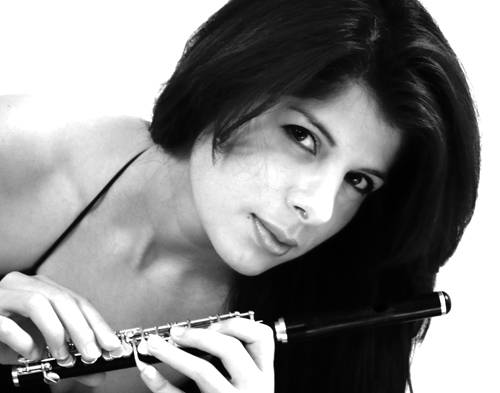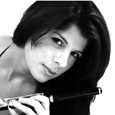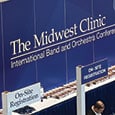
Where do you place your cork?
One skill to have for success in almost any facet of life is to know when to seek help from people who know more than you in certain areas. Part of being a great musician is finding a great instrument and then having it maintained regularly by excellent technicians. I trust these technicians to place the cork in the right place.
How do you align the headjoint with the body?
I can tell you where I place it, however this should be of little influence or significance to others. Where an individual aligns the headjoint has to do with many other variables, including length of arms and fingers, width of the shoulders, natural shape and size of the lips, teeth formation, the location of the aperture, etc. There is no one size fits all approach. Due to my unique physical attributes and the way I balance the piccolo in my hands, I align the piccolo headjoint a bit inward, so the outward edge of the embouchure hole is aligned with the center of the first key.
How do you care for your wooden piccolo?
I swab regularly and keep cigarette papers on hand to get rid of excess moisture. It is important to keep the instrument out of extreme temperatures or overly moist or dry places. It is helpful to lightly oil (almond oil) at least the headjoint every so often to help prevent potential cracks. Again it is always best to consult with the piccolo maker or your repair technician for the best ways to care for your instrument.
Do you wear one or two ear plugs?
I do not use earplugs. I never have and I probably never will. I dislike the feeling in my ears and I am a fan of being able to hear my sound in the same way it is being heard by others as much as possible. If I attempt to use earplugs, I actually experience a greater sensation of the spiking of certain frequencies. Some frequencies are actually more bothersome to me than when my ear can filter sounds in a more natural and balanced way. I have never had any problem with my hearing. I am not however advocating against earplugs. Everyone must protect his or her own hearing to the level that feels most appropriate and comfortable, and I encourage students to test a variety of plugs to find the best fit.
What alternate fingerings do you use on a regular basis?
I do not use many alternate fingerings as general practice. I am not opposed to them, but for me the notes and tuning lie in my mind and body, and not in my fingers. I almost always use standard fingerings for technical passages unless a certain finger that is needed for the following note is already in use, such as playing B in the 3rd octave going to F# also in the 3rd octave. In that case I would use the middle F#. I often find that supposedly easier fingerings cause the fingers to move too quickly, and this can create a rhythmic imbalance. Regardless of the fingering chosen, solid rhythm should be the backbone of technique, and the fingering option should provide increased musical clarity.
How do you warm up?
It depends on how you define warming up. For me, warming up means getting ready to play for that day. In that case, my warm up lasts about 1-5 minutes. This may be playing a simple melody or a few scale licks as a reminder that everything is where I left it the day before. Then I am ready to work on the ins and outs of my playing at the highest level and to understand how and why I am doing things. I spend a great deal of time working on fundamentals. I do not consider major technical work on sound, articulation, scales, and arpeggios as warm-up. It is intense and focused musical engagement. I want to know with confidence that what I am doing will work today, tomorrow, and twenty years from now. Muscle memory is important, but it is also the first thing to go if a thoughtful strategy is not in place. I have had this mentality ever since my school days, and because of this I have little problem playing at any time of day in just about any circumstance.
Do you have any tuning tricks when playing in an orchestra?
I do not play piccolo regularly in an orchestra, however, it is important to approach intonation in three important ways: Matching pitch, maintain-ing pitch, and interval placement. To blend and balance with others, it is important to use a sound that is not too thin or narrow, but rather full and relaxed at any volume. It is important to be able to start and end a tone at the same pitch, especially as the solo passages for piccolo in major symphonic works often include long sustained notes. Piccolo players should have a great awareness with whom they are playing at all times, and the pitch tendencies of these instruments as well as how the piccolo part fits into as specific chord or harmonic scheme. It is important to practice melodic interval studies in all keys to develop consistent pitch placement.
What are your thoughts on vibrato when playing the piccolo vs. the flute?
On both instruments it depends on the musical moment. Vibrato is not only a function of the sound, but it is also a function of the phrase. It can add beauty and color to the tone, and it can also intensify or propel the line. Vibrato is essentially a change in pitch. Every pitch has a center. As a general rule, it is advantageous to keep the vibrato circling around the center so that the vibrato is never wider than the pitch itself. When playing forte where pitch tends to be sharp, the vibrato can move to the floor of the pitch for greater stabilization. When playing piano, or with a lighter color, when the intonation tends to sag, the vibrato can ride to the top of the pitch to keep things shimmering and optimistic. Obviously, the tube of the piccolo is smaller than that of the flute, so make this adjustment in the width and prominence of the vibrato as well.
Do you single tongue most things or do you double tongue?
This also depends on the tempo and style of a piece or excerpt. Single-tonguing can tend to sound a bit better on piccolo, but it can only be done effectively at certain tempos. I think it is important to develop both with great facility, ease and clarity, however, the musical circumstance should dictate the technical option, not the limitations of the player.
What are the top five (or ten) excerpts a piccolo player should know well?
If you want a job playing piccolo in an orchestra, get to know the entire repertoire, not only excerpts. This includes entire works ranging from Beethoven to Shostakovich to the Rossini Overtures and the Stravinsky ballet suites. Do not be ready to play a few excerpts, be prepared to do the job. This alone will allow you to walk into an audition with a greater ability level and sense of confidence than many other players.
Biography
Nicole Esposito is the flute professor at the University of Iowa School of Music and sought after around the world as an artist teacher and performer of flute and piccolo. Esposito has been a featured piccoloist at recent National Flute Association Conventions in Washington D.C., Anaheim, Las Vegas, Charlotte, and Chicago as well as notable festivals including the San Francisco International Flute Festival, Atlanta Flute Fair, Florida Flute Convention, International Flute Festivals in Costa Rica, Argentina and Brazil, the British Flute Society Convention, the Adams Flute Festival in Holland, the Spanish Flute Convention, and European Piccolo Festival in Slovenia.
Esposito was the first piccolo player ever to be admitted into the Houston Symphony’s prestigious Ima Hogg Concerto Competition and has held the Piccolo Fellowship with the Aspen Music Festival. She has served as a judge for the NFA Piccolo Masterclass and Piccolo Artist Competitions as well as the Walfrid Kujala International Piccolo Competition sponsored by the Chicago Flute Club.
Her piccolo playing can be heard on Albany Records and the MSR Classics labels, and she is the host of the annual summer workshop, the Iowa Piccolo Intensive. Esposito holds degrees from Carnegie Mellon and the University of Michigan, and her primary teachers include Marianne Gedigian, Amy Porter and Jeanne Baxtresser.





